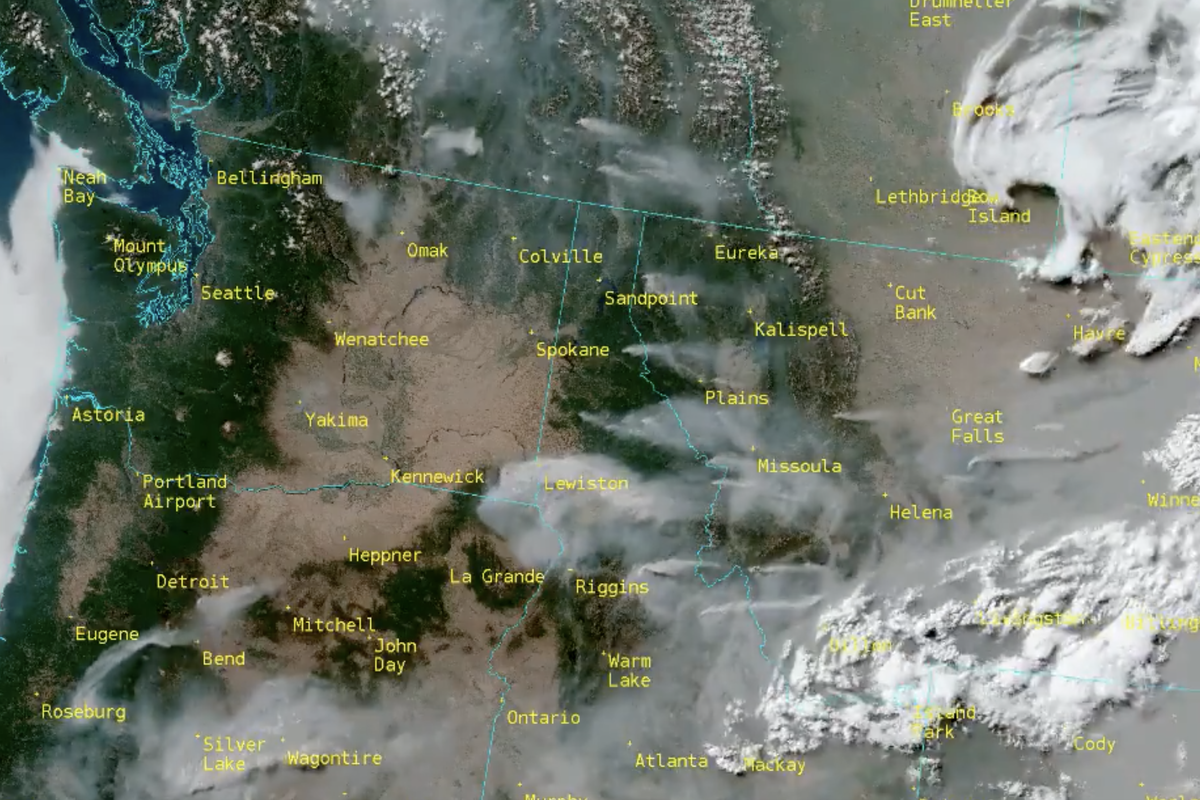Where there’s no smoke, there’s still fire: Spokane fortunate to avoid smoke, but luck could change at any time

Take in that blue sky and fresh air while you can because there’s no telling how long Spokane’s luck will last in avoiding hazy and unhealthy smoke from wildfires across the Northwest.
“Spokane is lucky so far,” said Greg Koch, a meteorologist with the National Weather Service in Spokane. “We’re fortunate we’re not downstream of some of these fires.”
When it comes to smoke, its all about wind direction. So far, winds have been blowing the smoke from big wildfires in southern Washington and northeastern Oregon mainly east and away from Spokane.
But any subtle wind shift could drastically change air quality conditions.
According to Koch, forecasters are seeing the potential for upper level weather patterns to bring winds out of the south from Oregon starting around Sunday.
Those winds could bring smoke from the Bootleg fire, a whopping 153,585 acre wildfire burning in southwest Oregon.
Winds blowing in from the south could also bring in smoke from the closer Snake River Complex and Dry Gulch fires.
The Snake River Complex fire near Waha is around 78,000 acres and 0% contained, while the Dry Gulch fire in Asotin County is around 55,000 acres and 20% contained.
While winds are not projected to change until early next week, winds can shift unexpectedly at any time and can drastically change air quality in a short time period.
Regions across southern Washington and the Idaho Panhandle have already experienced air quality issues due to wildfire smoke, according to the National Weather Service.
Lewiston, which is less than 15 miles away from the Snake River Complex and Dry Gulch fires, experienced an air quality index of 164 which is considered generally unhealthy, according to the Idaho Department of Environmental Quality.
And with extremely dry conditions across the Inland Northwest, there’s always the potential for new fires cropping up closer to Spokane.
The weather service forecast isolated thunderstorms in the North Cascades late Monday, which could bring new fire starts in the heavily forested area. A cold front moving in Wednesday and Thursday could also bring in high winds that could produce red flag warnings and exacerbate existing fires.
Despite Spokane’s good fortunes, Koch said that the number of wildfires and extreme dry conditions this early in the season doesn’t bode well.
“It’s awfully early in the season to be dealing with wildfires and smoke,” Koch said. “People need to be ready.”